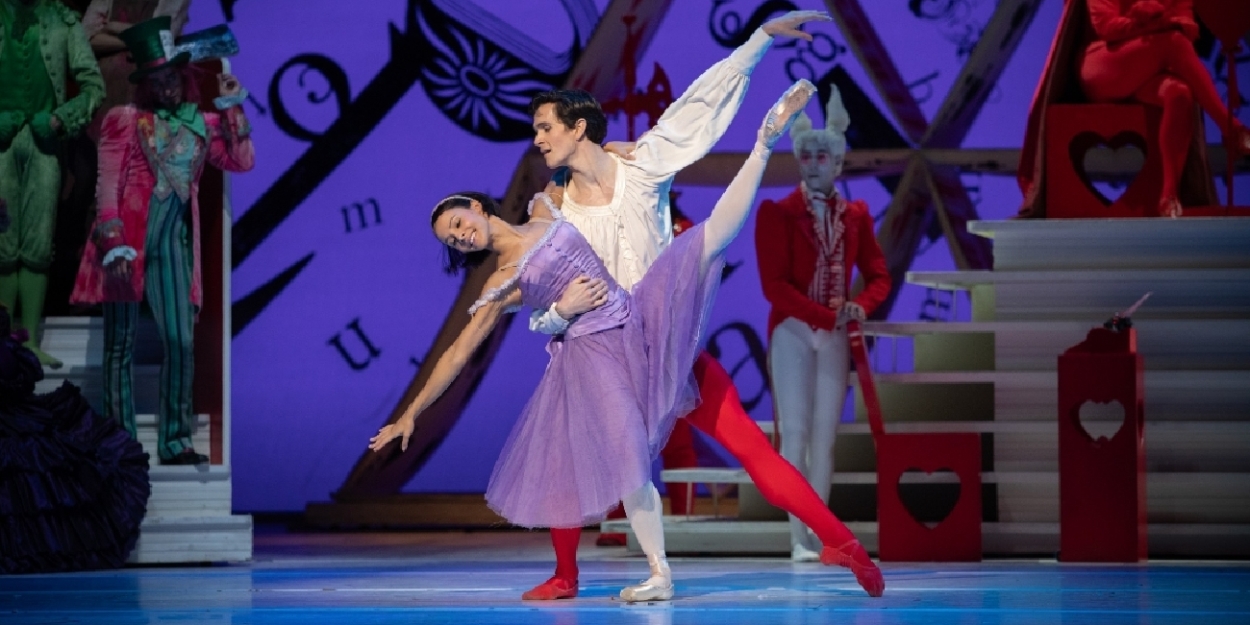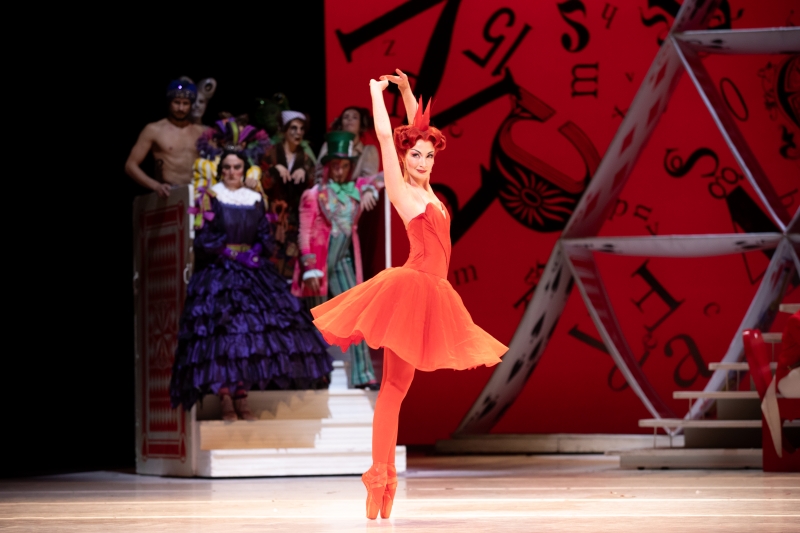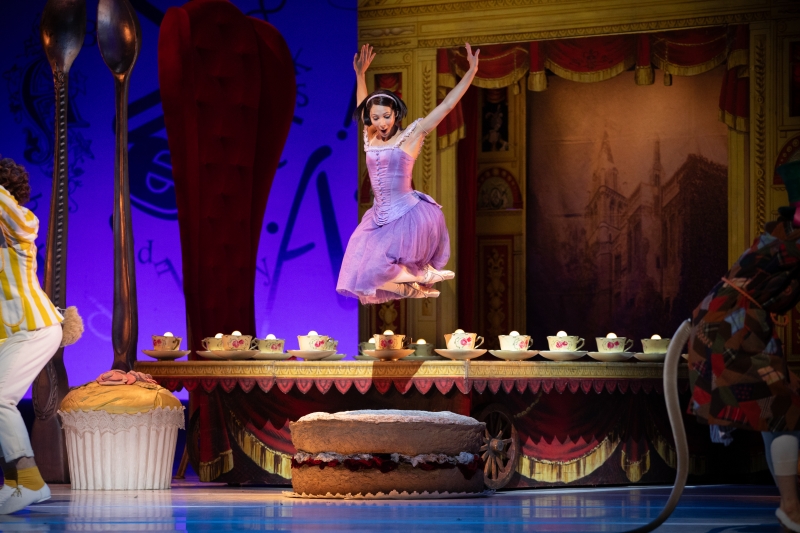Review: ALICE'S ADVENTURES IN WONDERLAND, Royal Ballet And Opera
A work in progress

![]() The Royal Ballet 24/25 season opened on September 28 with Christopher Wheeldon’s Alice’s Adventures in Wonderland. When first created in 2011 the ballet was made up of two acts, by 2012 Wheeldon had reworked things into three and this is what we find in the 2024 revival.
The Royal Ballet 24/25 season opened on September 28 with Christopher Wheeldon’s Alice’s Adventures in Wonderland. When first created in 2011 the ballet was made up of two acts, by 2012 Wheeldon had reworked things into three and this is what we find in the 2024 revival.

Photo Credit: Alice Pennefather
The creative team involved is no joke, yet at times the overall feeling is more too many cooks (pun) than overt, creative harmony. The Lewis Carroll narrative was never going to be easy to bring to the stage, and Nicholas Wright's complicated scenario doesn't always help matters, but the issue with the problematic first two acts is that we get a lot of storytelling with very little valuable dance to support it.
Wheeldon defines the majority of the characters in Act 1 both in 19th century Oxford and the other reality. When Alice leaves this dimension we witness her experience many key moments from the original prose; falling down the rabbit hole, drink this - eat that, but most of it takes place with the protagonist on stage alone, surrounded by multimedia gizmos in order to tell the story. Begging the question: is this narrative ballet or a tech sideshow?
Act 2 sees a plethora of divertissement; an often dismembered Cheshire Cat realised by numerous puppet masters. A caterpillar which feels very Arabian from The Nutcracker in flavour, a tapping Mad Hatter and a frantic kitchen scene where a pig throne steals the show.
Wheeldon also includes the first big corps de ballet number at this point; a Waltz of the Flowers of sorts. There's nothing wrong with it per se, yet the content doesn't feel memorable and the outlandish headgear and overly vivid colour palette seem to complicate matters, almost hiding the choreography rather than quietly supporting it.
Act 3 is a turning point and feels like a brilliant ballet in its own right. We see strong characterisation via dance (including highly amusing Petipa reference), a clear story line and an impressive corps that livens the environment through both dance and visual aesthetic.

Photo Credit: Alice Pennefather
Though the entire evening has clear weaknesses in practice, it's obvious that Wheeldon has created a very “Royal Ballet” ballet for the company in theory. I feel the presence of Frederick Ashton’s comic flair, Ninette de Valois’ military precision and Kenneth MacMillan’s adagio-infused hero. And these are all huge compliments when considering the gravitas of the company’s founding mother and choreographic fathers.
The principal dancers also do Wheeldon proud. The original Alice, Lauren Cuthbertson, is now enjoying the execution hungry Queen of Hearts role. Cuthbertson is a natural comedienne so has the audience in the palm of her hand from the get-go. Her reading is a delightful balance of regal insanity and the dancing fills the house throughout with no waning. She's also very well supported by an exhausted King of Hearts played by Bennet Gartside, who continues the Royal Ballet’s legacy of understated, powerful character work.
Francesca Hayward as Alice and William Bracewell as the Knave of Hearts are a handsome pairing and each time they dance together the ballet takes on more - much appreciated - meaning. Wheeldon choreographs pas de deux well, as nothing reads predictably yet the ingenuity doesn't feel awkward in execution either. The partnering moves through space with both whimsical lushness and heated passion, and when the characters dance individually they do so on the edge of improvisational discovery.
Hayward feels in the moment offering fresh dancing that never translates as staid, and Bracewell is reminiscent of an aristocratic gazelle, never losing his divine composure even during the trickiest of allegro phrases, as Wheeldon takes the Knave exactly where you don't expect and then demands another explosive stag leap from seemingly nowhere. But for the record: these aren't ballerina and danseur noble roles in the classical sense. The overriding feeling is more soubrette in nature, reaffirmed by the lack of a grand pas to bring things home.
One can understand why Wheeldon didn't want to follow any form of existing, structural template, and perhaps couldn't because of Carroll’s unpredictable narrative, but as it stands the ballet as a whole still hasn't found its feet. Joby Talbot’s score is both background and exacting and Bob Crowley’s designs feel simultaneously garish and sparse - go figure. But this sense of contradiction, or rather lack of identity is what plagues the ballet to date. And one wonders if Alice will ever find her, or its underpinning.
Alice’s Adventures in Wonderland runs until 6 July 2025.
Photo Credits: Alice Pennefather
Reader Reviews
Videos

